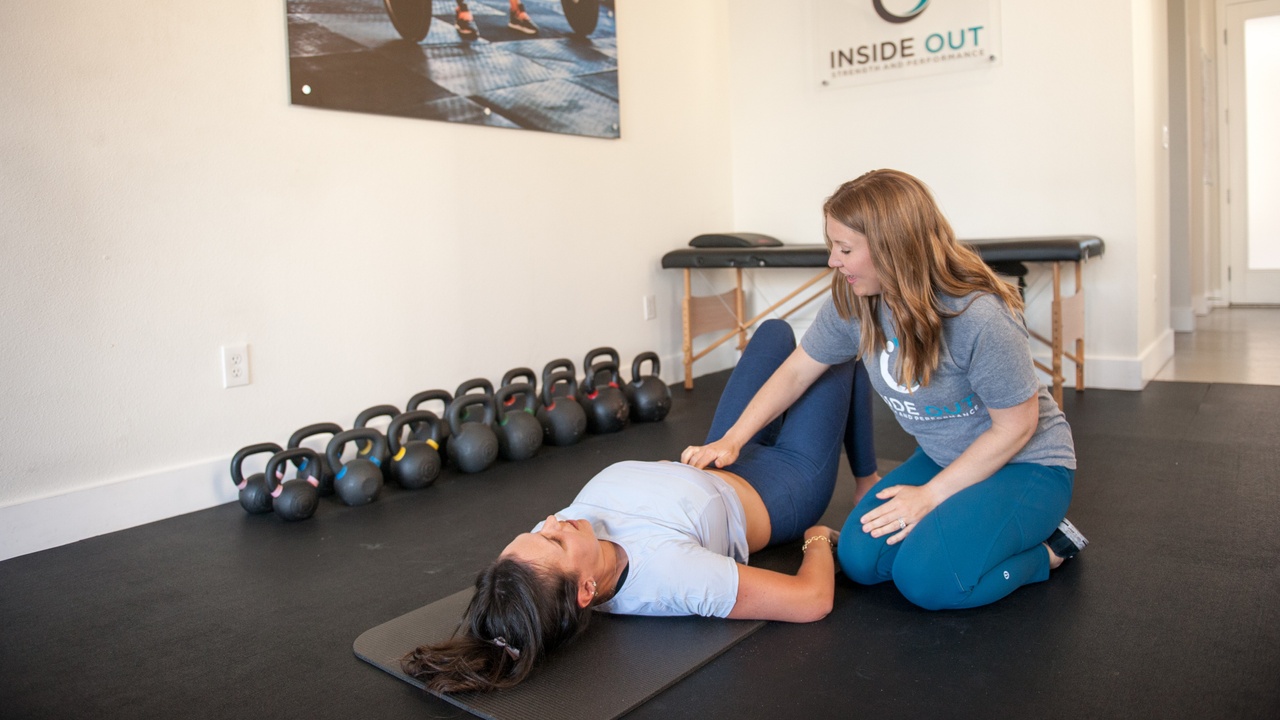Breathing Exercises for Sports Performance and Stress Management
Aug 11, 2022
Deep Breath In, Deep Breath Out. Breathing is something we take for granted. Whether you’re experiencing lingering effects post-COVID or want to improve your breathing for daily activities and exercise performance - we’ve got you covered.
We believe your breath can transform your state. If you’re feeling stressed and overwhelmed, you can use your breath to tap into your sympathetic nervous system to bring down your nervous system response rather than feeding into your stress and anxious feelings. Your breath can also be used as a warm up to facilitate performance before a run or strength training session.
Breathing is multidimensional. There’s a biochemical (CO2, pH), biomechanical (patterns, ribcage movement, respiratory muscles), and the psychophysiological component.
Let’s first define breathing and learn some of the basics of how it works. Breathing occurs in through our respiratory system - and interestingly enough it’s directly tied to our nervous system. Like we mentioned above, that’s how we can can use our breath as a tool to change our state and response in given situations.
The respiratory system is unique because it has a conscious component but also an unconscious component - meaning we don’t have to think about breathing every single breath throughout the day - thank goodness our brain stem helps regulate this.
Breathing 101 - Your nervous system sends a signal to your diaphragm muscle to contract downward, which creates a change in pressure like a vacuum in the lungs, forcing air to rush in. Then oxygen will transfers into your bloodstream via tiny air sacs in the lower portion of the lungs, and circulates to your heart. Your heart will pumps the oxygenated blood to your other organs and brain. As the cells use the oxygen, carbon dioxide (CO2) is produced and absorbed back into the bloodstream, eventually returning to the lungs. There’s also a different part of your nervous system that will then signal the diaphragm to relax back upward on the exhale, which pushes the air (and CO2) out of the lungs.
This process happens over and over again about every 3-5 seconds.
You’d be surprised how many people that enter our gym learn that they’ve been breathing opposite for YEARS. Especially the new mothers due to physical and physiological changes during pregnancy and postpartum.
We would call this dysfunctional breathing. The term "dysfunctional breathing" can be somewhat vague and includes a range of breathing behaviors and symptoms, including the following:
People may classify dysfunction as:
- Hyperventilation and low CO2
- Breath holding with exercise or activity
- Mouth breathing
- Upper chest breathing
- Inability to take a deep and satisfying breath
- Unexplained breathing discomfort
- Various combinations of these factors
If any of these sound like you, we’d recommend working with a physical therapist or coach on learning to the root to why you’re breathing is dysfunctional and how to retrain your breathing for efficiency and performance.
The following exercises are a place to begin if you’re looking to rebuild lung capacity, take those deep inhales and exhales without feeling limitations, and a starting point for addressing your breath.
Diaphragmatic Breathing - Hooklying
Box Breathing
 Box Breathing Video
Box Breathing Video
Banded Pull Apart with Breathing
Banded Overhead Arm Raise
T-Spine Rotation with Rib Grab
Brettzel Stretch with Diaphragmatic Breathing
Breathing Sequence Video - Complete 3-5 rounds of each. Included in this video: Upper Chest Breathing, Diaphragmatic Breathing,Box Breathing, Banded Pull Apart with Breathing, Banded Overhead Arm Raise, T-Spine Rotation with Rib Grab, Brettzel Stretch with Diaphragmatic Breathing
Additional Breathing Resources:
Umbrella Breathing
90/90 Breathing
Crocodile Breathing
This will cover the basics of breathing but if you’re looking to learn more about how to optimize your breath for exercise, performance or improving your core strength and reduce back pain - fill out a contact form to set up a FREE consultation with our team at Inside Out to get started!
